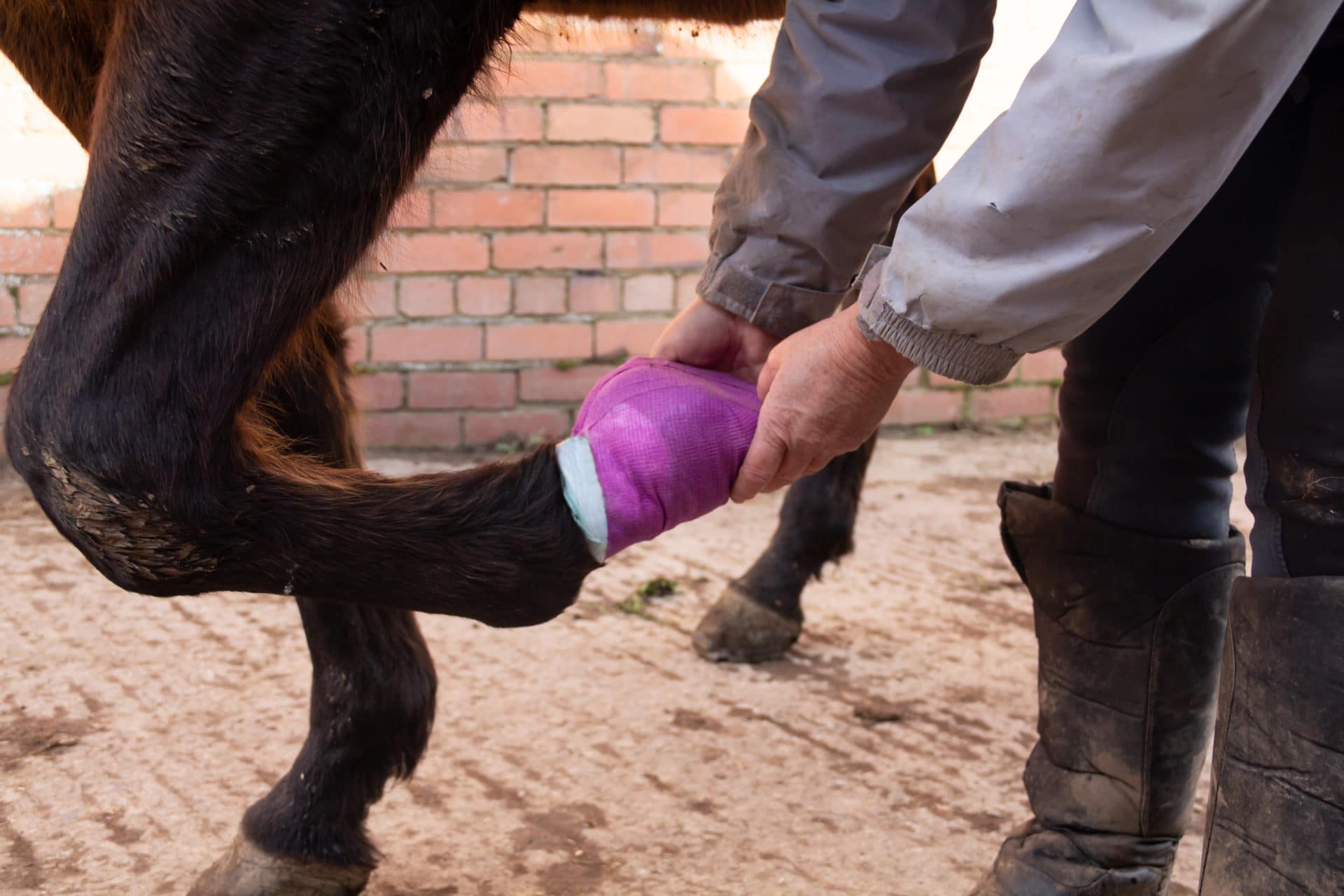Abscesses in horses are common, but there are many ways to prevent serious complications. Abscesses of all kinds can occur in various places and cause great suffering to the horse.
ABSCESSES IN THE HORSE’S FOOT
What are the symptoms of foot abscesses in horses?
Symptoms of abscesses in horses will usually be a decrease in appetite, a drop in weight and a slight fever of 38 or 39 degrees.
When the abscess affects the horse’s hoof or crown, the first visible symptom will usually be lameness in one of the limbs. Sometimes the lameness may become more severe over the course of a few days, indicating that the abscess is growing. The horse’s foot is also hot and painful, indicating inflammation in the hoof. The foot may also have a throbbing digitate pulse, which is normally absent. If the abscess is mature and located in the crown or upper part of the hoof, a fistula may appear. There is also engorgement of the limb where the abscess is present.
In order to confirm the diagnosis, the veterinarian or farrier may use probing forceps to determine the presence of an abscess in the horse’s foot. The veterinarian or farrier will apply light pressure to the sole in several places with the forceps. The horse will react when the forceps touch the sensitive area (note that this test is not very painful for the horse). If the probing tests are inconclusive, the veterinarian may take x-rays of the hoof to verify the presence or location of the abscess.
What are the causes?
Following the onset of symptoms, it is important to quickly determine the cause of the foot abscess. This is particularly important as some horses suffer from recurrent abscesses.
The abscess forms as a result of bacteria entering the foot. There are several reasons for the presence of bacteria:
- For example, this can occur as a result of a shock: if the horse injures the sole of the hoof on a sharp stone or object. An abscess may appear under the sole of the horse’s hoof if it is cracked, as this will have encouraged the introduction of bacteria.
- It may also be due to the quality of the ground your horse lives on. Especially in winter, paddocks or pastures can be very muddy. Living on such ground makes the horn of the horse’s hooves softer and more permeable. This makes it easier for bacteria to penetrate, especially at the white line.
- Poor shoeing: an abscess can form in the horse’s foot if a nail is driven too close to the flesh or too high in the foot.
What treatments are available to cure a horse’s foot abscess?
Once the diagnosis has been made, your veterinarian can establish a treatment protocol. First of all, it will be necessary to de-shod the horse’s foot. If the abscess is ripe, the vet (or farrier) will be able to dig out the horn to the abscess. Once the abscess is pierced, a black, foul-smelling pus pocket will spill out and give the horse instant relief.
If the abscess is not ripe, it is strongly recommended that poultices be applied to the horse’s foot. The most commonly used poultices are usually made from linseed. They help to mature the abscess and soften the horn, which will then allow the abscess to break through. Other moistened poultices or dressings are also available to treat foot abscesses. In any case, optimal care of the hoof abscess requires a daily change of these poultices.
Once the abscess has broken through, antiseptic solutions should be applied daily to clean the wound. Bleach baths are frequently used to treat abscesses in the horse’s foot, as the bleach easily removes the bacteria causing the infection. The healing time may take a few days or weeks for the lameness to disappear completely. During this time of healing the horse should be kept in a stall that is as clean and dry as possible. For a horse with recurrent foot abscesses, it will be necessary to change the living conditions (e.g. if the horse lives in a paddock or meadow that is often wet).
ABSCESSES IN THE HORSE’S MOUTH
What are the symptoms of mouth abscesses in horses?
For symptoms, an abscess of the mouth will be easily seen on the head if it is a dental abscess. A nasal discharge from one nostril may also be seen. The horse may also have bad breath if there is a mouth abscess.
The horse is likely to be reactive to work, especially if it has difficulty accepting its bit. If the abscess is very painful, the horse may also have difficulty feeding and lose condition.
What are the causes?
Abscesses in the horse’s mouth are common in young or older horses, especially due to dental problems. Indeed, horses need regular dental care (once or twice a year) especially as they start to age. The aim of the equine dentist is to maintain a uniform dental table to facilitate the horse’s chewing. With a misaligned tooth table, the horse’s teeth can crack leaving the way open for bacteria to attack the pulp of one of the teeth. The infiltration of these bacteria leads to the formation of an abscess.
What treatments are available to cure a horse’s mouth abscess?
Treating an abscess in the horse’s mouth requires surgery by an equine vet. The horse will need to be sedated and the root of the infected tooth removed. While the abscess is healing, painkillers and antibiotics can be given to relieve the pain.



